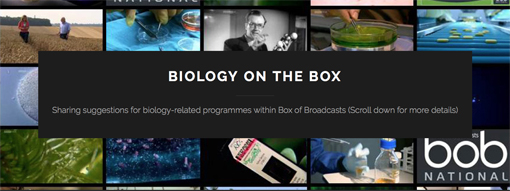Science on Screen
There will be occasions when the content of a programme is sufficiently strong to warrant watching it in its entirety. Examples that are worthy of this attention include The Battle to Beat Polio (2014), any episode of the series Pain, Pus and Poison (2015) and The Chemistry of Life, which is the second episode of Adam Rutherford’s trilogy The Cell (2011). The Chemistry of Life is a sixty-minute documentary that provides a beautiful walk through of the experiments that identified DNA as the molecule of inheritance, and I have, in the past, committed a full session to watching this programme with first year students – providing them with a structured sheet to aid their note-taking.
As discussed this may not always be the most appropriate use of valuable face-to-face time and there are practical difficulties in watching a full one hour documentary in a fifty-minute lecture slot. A few years ago, there was no genuine alternative; if your class contained more than a handful of students and you felt it was worthwhile them all seeing something then you had to commit the necessary time. This is no longer the case. The rise of authorised archives of streamed television (such as Box of Broadcasts, Planet e-Stream and ClickView) and on-demand television services make it possible to set students the task of watching a particular programme at home. In this way, watching broadcast media becomes a component of a flipped learning teaching model.
Awareness
The second limitation we identified previously was a lack of awareness of what broadcast material might be available. It is quite possible that a section of a programme would be pertinent to a basic concept about which you are teaching, but how are you to use it if you don’t know it exists?
In the UK we are blessed with a number of valuable tools to help in tracking down relevant broadcasts. In addition to the websites of broadcasters themselves, and search facilities within the archives, there is also the Television and Radio Index for Learning and Teaching (www.trilt.ac.uk). TRILT includes a significant amount of metadata relating to programmes but ever this will not necessarily provide nuanced guidance for ways in which they could be used within the context of science teaching.
This is where new service Biology on the Box (www.biologyonthebox.wordpress.com) comes in. Posts in a variety of styles highlight television (and to a lesser extent radio) material of relevance to undergraduate bioscience, with recommendations coming from both academics and students. Some items merely raises awareness of the existence of digital copies of programmes, others include reviews, structured activities and/or tried-and-tested classroom applications. Other disciplines are also developing subject-specific resources (e.g. www.historyonthebox.wordpress.com). If you would like to consider developing the use of broadcast media in your own teaching, you could do worse than look around one of these sites to get a feel for the different ways in which television and radio might be exploited more fully.
Dr Chris Willmott
(An earlier version of this article appeared in the December 2015 edition of The Biochemist, the magazine of the Biochemical Society.)
 Learning on Screen
Learning on Screen
